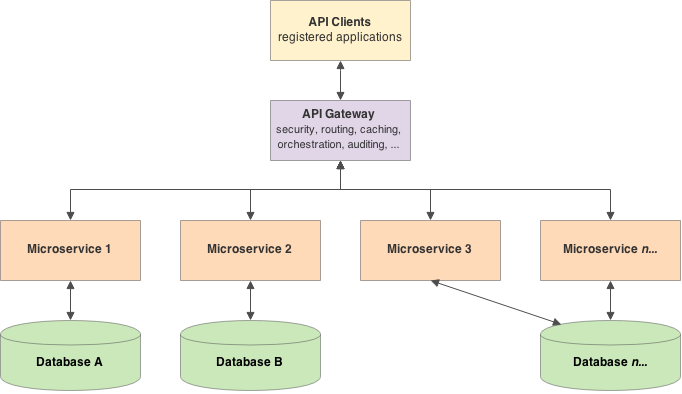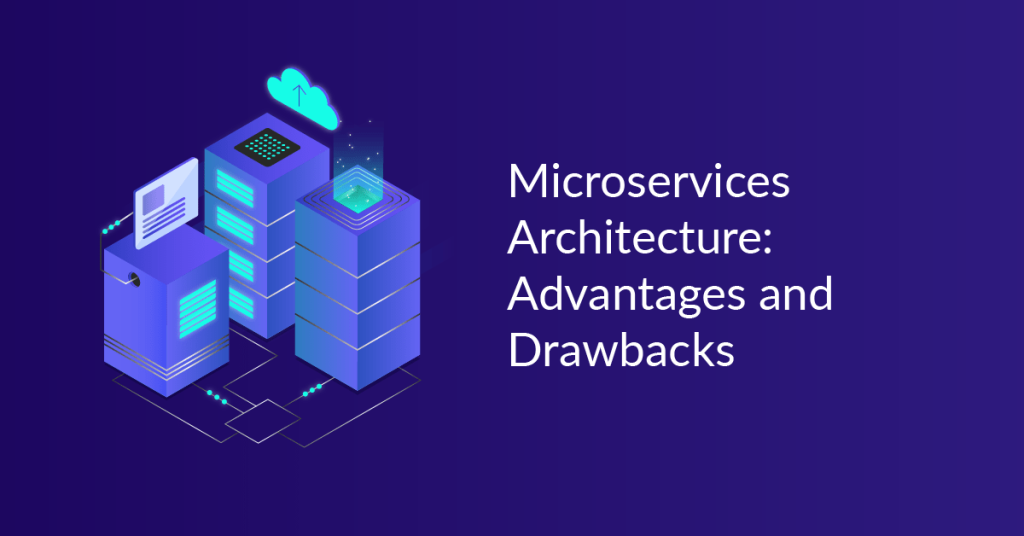Microservices
Microservices architecture is a framework where an application is separated into smaller services and each of those services typically runs a unique process and manages its own database.
There are many pros and cons to microservices.

Advantage of Microservices Architecture

- Improved productivity
The reduced codebase of each modular element of an application makes releasing, scaling,deploying and testing different services more manageable,
and associated tasks can be divided among development teams and worked on simultaneously.
Breaking an application down into smaller autonomous fragments makes it easier to build and maintain.
Each service can be developed, deployed, and managed independently, and can utilize different programming languages, different technology, and different software environments based on the needs of each.
- Better resiliency
Implementing microservice-based architecture adds ease to the process of identifying and resolving the root cause of performance issues. The improved fault isolation offered by individual modules means larger applications remain unaffected by a single failure. Consequently, the risk of downtime is reduced since developers can roll back an update or make changes to a module without redeploying the entire application.
- Increased scalability
The fact that each service can be written in a different language or technology allows DevOps
teams to choose the most appropriate tech stack for each module without concerns about incompatibility. Individual services can also be scaled independently, and new components can be added without requiring downtime and redeployment of the entire system.
- Continuous integration/continuous delivery (CI/CD)
Continuous integration and continuous delivery are key concepts of both the DevOps philosophy and the agile approach. Microservices architecture allows cross-functional teams to develop, test, problem-solve, deploy, and update services independently, which leads to faster deployment and troubleshooting turnaround times.
- Faster Time to Market
Microservices can also help organizations get their products to market faster. By breaking an application down into smaller, more manageable pieces, it’s often possible to get a product to market more quickly than if a monolithic approach was used.
- Increased Modularity
Microservices also offer increased modularity, which can be a major advantage for organizations
that need to make changes to their applications quickly. By breaking an application down into smaller pieces, it’s often possible to make changes more quickly and with less risk. Additionally, because microservices are self-contained, it’s easier to understand how they work and how they fit into the overall application.
- Services can be written in different programming languages and can be accessed by using any framework.
- Independently develop, deploy, redeploy, version, and scale component services in seconds without compromising the integrity of an application
- Better fault isolation keeps other services working even though on got failed.
- Zero downtime upgrades.
- Services can be of from different servers or even different data centers.
- Interaction with other services in a well-defined protocol
- Monitor, capture, and report health diagnostics
- Reliable and self-healing
- Supports continuous integration and delivery
- Easy to transfer knowledge to the new team member
- Easy to integrate with third parties
In case you have additions to this Advantage , just let me know in the comments!